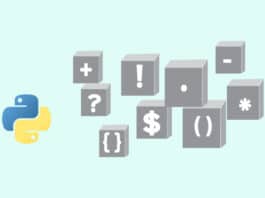Real-time data analytics in IoT offers immense potential to optimise processes, enhance user experiences, and drive meaningful insights. Open source tools play a pivotal role in realising this potential, providing cost-effective, flexible, and powerful solutions for real-time analytics.
The rapid evolution of technology has ushered us into the era of the Internet of Things (IoT), where an extensive network of interconnected devices is generating an unprecedented volume of data. This data holds immense potential, offering insights into consumer behaviour, operational efficiency, and numerous other aspects that can drive informed decision-making. However, the true value of this data lies in its timely analysis.
Real-time data analytics involves the immediate processing and analysis of data as it is generated. This instantaneous approach allows for proactive responses, identifying patterns, trends, and anomalies in real time. When applied to IoT, real-time analytics enables organisations to optimise operations, enhance user experiences, and even prevent critical failures.
Understanding real-time data analytics in IoT
IoT is not merely about connecting devices; it’s about leveraging the data these devices produce. Consider a scenario where an urban traffic management system utilises IoT sensors embedded in traffic lights, cameras, and vehicles to collect real-time traffic data. Without real-time analytics, this data remains a vast, untapped resource. However, with real-time analytics in place, the system can instantly analyse traffic patterns, detect congested areas, and dynamically adjust traffic light timings, optimising traffic flow.
The volume, velocity, and variety of data generated by IoT devices necessitate real-time analytics. Traditional data processing methods fall short in handling this immense influx of data in a timely manner. Real-time analytics, on the other hand, empowers organisations to make decisions within milliseconds or seconds of data generation.
Open source tools for real-time data analytics
To harness the power of real-time analytics in IoT, open source tools play a pivotal role. These tools are not only cost-effective but also offer a high degree of flexibility and customisation to suit specific IoT requirements.
Apache Kafka: Managing data streams
Apache Kafka is a leading open source platform designed for handling real-time data streaming. It acts as a high-throughput, fault-tolerant, and horizontally scalable platform that allows you to publish and subscribe to streams of records. Think of it as a messaging system on steroids, well-suited for real-time analytics.
Example: How Uber uses Kafka to process and analyse ride data in real-time
Uber, the ride-sharing giant, employs Apache Kafka to process an enormous amount of data generated by users, drivers, and vehicles in real time. Every trip, GPS coordinate, and user interaction is captured and streamed through Kafka, enabling Uber to optimise ride matching, detect fraud, and enhance overall service efficiency.
Apache Flink: Stream processing
Apache Flink is an open source stream processing framework that provides robust support for event-driven applications. It excels in handling high-throughput, low-latency streaming analytics. Flink processes data in real time, making it suitable for various IoT applications.
Example: How Netflix utilises Flink for real-time recommendations based on user behaviour
Netflix, the popular streaming service, utilises Flink to process real-time data from user interactions like searches, clicks, and watch history. This enables Netflix to offer personalised recommendations to users, enhancing their streaming experience.
Elasticsearch: Real-time search and analytics
Elasticsearch, an open source search and analytics engine, is a powerful tool for real-time data analysis. It’s specifically built for horizontal scalability, reliability, and real-time search capabilities. In the realm of IoT, where data needs to be searched and analysed in real time, Elasticsearch proves to be an invaluable asset.
Elasticsearch operates on a schema-free JSON document model, making it flexible and adaptable to various data formats. It can handle a massive volume of data and provide near-instantaneous search results, which is crucial for real-time analytics in IoT.
Example: How NASA uses Elasticsearch to monitor space data in real time
NASA, the renowned space agency, employs Elasticsearch to monitor and analyse vast amounts of data coming from satellites and space missions. The real-time capabilities of Elasticsearch enable NASA to swiftly identify anomalies, track satellite positions, and analyse mission data, contributing to more efficient space exploration.
InfluxDB: Time-series data handling
InfluxDB, an open source time-series database, is designed to handle high write and query loads. It’s the go-to solution for applications that generate data with timestamps, which is common in IoT. Time-series databases are crucial for real-time analytics, as they allow efficient storage, retrieval, and analysis of time-stamped data.
Example: How IoT-based weather stations use InfluxDB to store and analyse climate data in real time
IoT-based weather stations use InfluxDB to store real-time climate data such as temperature, humidity, and atmospheric pressure. The ability of InfluxDB to handle time-series data efficiently enables meteorologists and researchers to analyse weather trends and make timely predictions.
Grafana: Data visualisation
Grafana, an open source analytics and monitoring platform, is a vital component for real-time data visualisation. It integrates with various data sources, including Elasticsearch and InfluxDB, to create interactive and customisable dashboards, enabling users to visualise data in real time.
Example: How a smart home monitoring system uses Grafana to display real-time energy consumption
In a smart home, IoT devices continuously generate data related to energy consumption. Grafana integrates with IoT platforms to display this data in real time, allowing homeowners to monitor and optimise their energy usage.
Advantages of open source tools in real-time analytics
Real-time data analytics in IoT can be a game-changer, and employing open source tools in this realm offers a multitude of advantages.
- Cost-effectiveness: Open source tools are usually free to use, reducing the overall cost of implementing real-time analytics solutions. This is especially advantageous for startups and smaller organisations with budget constraints.
- Flexibility and customisation: Open source tools provide flexibility to tailor solutions according to specific IoT requirements. Developers can customise the tools to match the unique characteristics of the IoT devices and the data they generate.
- Strong community support: The open source community is vast and active, offering continuous support, updates, and improvements. This collective knowledge and collaboration drive the rapid evolution and enhancement of open source tools.
- Security through transparency: Open source tools often have their source code available for inspection. This transparency allows experts to assess the security measures and identify vulnerabilities, resulting in more robust and secure solutions.
- Rapid prototyping and development: Open source tools come with pre-built modules and frameworks, accelerating the development process. Developers can leverage these resources to rapidly prototype and iterate their real-time analytics solutions.
Challenges and considerations
While open source tools offer significant advantages, implementing real-time data analytics in IoT using these tools is not without challenges. It’s essential to be aware of these challenges and carefully consider them during the implementation process.
- Scalability challenges: Real-time data analytics in IoT involves processing a massive volume of data. As the IoT ecosystem expands, ensuring scalability becomes crucial. Open source tools must be able to scale seamlessly to handle increasing data loads.
- Data security and privacy concerns: Real-time analytics often involves processing sensitive data. Ensuring the security and privacy of this data is paramount. Implementing adequate security measures and complying with privacy regulations are essential considerations.
- Latency: Achieving true real-time analytics requires minimising latency in data processing. The architecture and design of the analytics solution, along with the efficiency of the open source tools used, play a vital role in minimising latency.
- Interoperability: IoT environments consist of diverse devices and platforms. Ensuring seamless interoperability between various IoT devices and open source analytics tools is a challenge that requires careful planning and integration.
- Complexity of implementation: Implementing a real-time analytics solution using open source tools can be complex, especially for those new to the technology. It’s essential to have a skilled development team with expertise in both IoT and the selected open source tools.
Addressing these challenges involves a combination of thorough planning, proper architecture design, and leveraging the features of open source tools. Organisations should conduct a comprehensive analysis of their IoT needs and carefully choose the right open source tools that align with their requirements. Moreover, engaging with the open source community and seeking expert guidance can significantly mitigate these challenges.
Predictions for future trends
The landscape of real-time data analytics in IoT is continuously evolving, and several trends are shaping its future.
- Edge computing integration: With the rise of edge computing, real-time analytics will increasingly move closer to the data source. Edge analytics will become more powerful, reducing latency, and enhancing the efficiency of real-time data processing.
- Machine learning integration: Integrating machine learning algorithms into real-time analytics will enable IoT devices to make more intelligent and informed decisions on-the-fly. Predictive analytics and anomaly detection will become integral parts of real-time processing.
- Enhanced security measures: As IoT devices become more prevalent, ensuring the security of real-time analytics will be paramount. Future trends will focus on enhancing security measures to protect sensitive data processed in real time.
- Advancements in 5G technology: The rollout of 5G will revolutionise real-time analytics in IoT by significantly improving network speed and reducing latency. This will facilitate faster data processing and more efficient real-time analytics.
Staying informed about the latest trends and advancements in both IoT and open source technologies is crucial. With the right combination of open source tools and a forward-thinking approach, organisations can unlock the true power of real-time data analytics in IoT.




